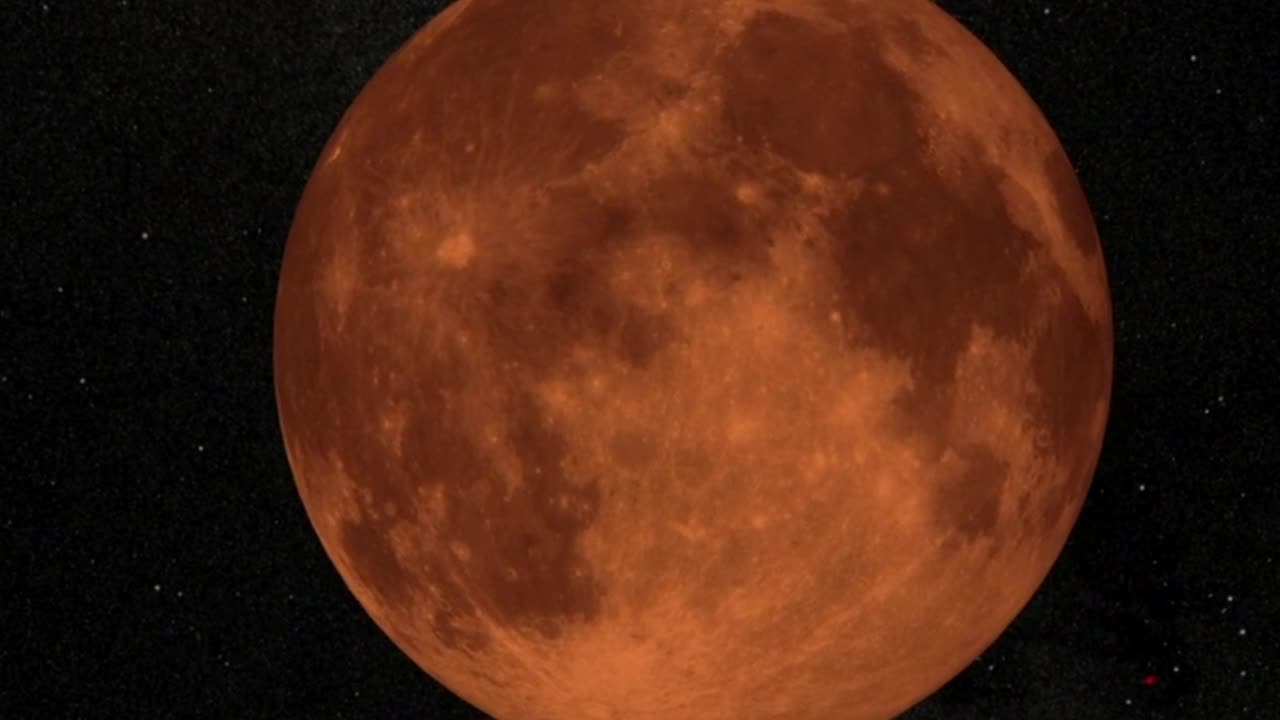Premium Only Content

Why Moon Turn Red???
The phenomenon of a red Moon, often referred to as a "Blood Moon," occurs during a lunar eclipse when the Earth comes directly between the Sun and the Moon. The Earth's atmosphere scatters sunlight in all directions, and during an eclipse, the only light that reaches the Moon has to pass through the Earth's atmosphere. Here's why the Moon turns red:
Rayleigh Scattering: The Earth's atmosphere scatters shorter wavelengths of light (blue and green) more effectively than longer wavelengths (red and orange). This is known as Rayleigh scattering. When the sunlight passes through the Earth's atmosphere, most of the blue and green light is scattered away, leaving the longer wavelengths to dominate.
Red and Orange Hues: As a result of Rayleigh scattering, the remaining light that reaches the Moon consists of red and orange hues. This is why the Moon takes on a reddish or coppery appearance during a lunar eclipse.
Sunset and Sunrise Effect: The red Moon is reminiscent of the colors we see during sunrise or sunset on Earth. This is because the same scattering effect occurs when the Sun is near the horizon, leading to the warm, reddish tones we associate with these times of day.
Atmospheric Conditions: The exact shade of red can vary from one eclipse to another, depending on atmospheric conditions. Particles and pollutants in the Earth's atmosphere can affect the color and intensity of the red hue.
In summary, the Moon turns red during a lunar eclipse due to the scattering of shorter wavelengths of light by the Earth's atmosphere, which allows the longer wavelengths, such as red and orange, to reach and illuminate the Moon. This stunning celestial event is a result of the interplay of sunlight and Earth's atmospheric conditions during an eclipse, creating a captivating and memorable sight in the night sky.
-
 LIVE
LIVE
SternAmerican
1 day agoElections Town Hall – Sunday, March 30th at 2:00PM EST: Your Voice, Your Vote
10,699 watching -
 LIVE
LIVE
DookiePox
7 hours ago $0.88 earnedGood Morning. Sunday Morning.
2,014 watching -
 LIVE
LIVE
GritsGG
5 hours ago#1 Warzone Win Grind! 🔥
9,281 watching -
 14:39
14:39
Talk Nerdy Sports - The Ultimate Sports Betting Podcast
2 hours ago3/30/25 - 🎙 Sunday Funday Fire: 10 Sharp Bets, 5 Parlays & 2 Locks That Hit Different
8.52K -
 2:01:52
2:01:52
Game On!
21 hours ago $15.95 earnedMarch Madness Final 4 Will Be Set TODAY!
65.5K4 -
 3:41:49
3:41:49
LumpyPotatoX2
5 hours agoHunt Shadows Family Sunday - #RumbleGaming
37.4K4 -
 5:04
5:04
Film Threat
1 day agoA WORKING MAN | Film Threat Reviews
38.5K4 -
 22:08
22:08
Misha Petrov
1 day agoMain Character Syndrome Is Spreading
43.6K68 -
 LIVE
LIVE
NeoX5
3 hours agoAssassin's Creed: Shadows - Wheelin and Dealin #Factor75partner | Part 6 | Rumble Gaming
96 watching -
 LIVE
LIVE
Chi-Town Gamers Livestreams
3 hours ago $0.63 earnedBaldur's Gate 3 W/ CTG & XayRico Ep. 4 *FOR REAL THIS TIME* | 9 Hour Stream...LFG!
128 watching